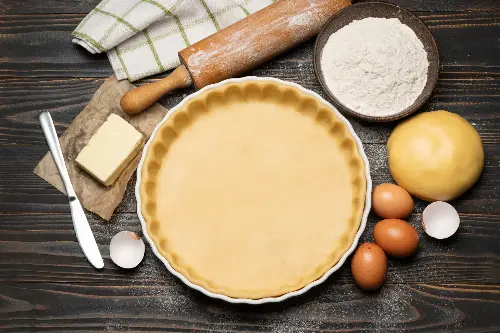Sunday brunch has become a revered weekend ritual, an opportunity to unwind and indulge in delectable fare surrounded by friends and family. As culinary enthusiasm continues to rise, transforming a home into a bastion of gastronomy has never been more accessible or enjoyable. At the heart of many a brunch menu lies a timeless French classic – the Quiche Lorraine. This savoury tart marries the simplicity of eggs and cream with the rich depths of cheese and bacon, all cradled within a flaky pastry. So, roll up your sleeves and prepare to elevate your Sunday gathering with a recipe that will not merely satisfy appetites, but truly wow your guests.

Before you embark on your culinary journey, it is essential to appreciate the history of the Quiche Lorraine. Originating from the Lorraine region in France, this dish has evolved over centuries. Once a humble pie using bread dough, lard, and a simple egg and cream custard, it has now been refined and enriched with luxurious ingredients that continue to define its legacy.
The secret to the perfect Quiche Lorraine lies in the balance and quality of the ingredients. Begin with the crust – the foundation of the quiche. A well-made pastry is the difference between good and great, and achieving a buttery, flaky texture is an art form. Pâte brisée is the traditional choice. This shortcrust pastry is straightforward to make: combine flour, a pinch of salt, cold cubes of butter, and a dash of ice water. Work swiftly to ensure that the butter does not melt from the warmth of your hands. Once the dough has rested and chilled, roll it out and gently lay it into your tart pan, taking care to press it into the edges without stretching it. Blind baking the crust with parchment paper and baking beans will prevent it from becoming soggy once the custard is added.

Next is the filling – a harmonious blend of eggs, cream, and flavours. Quality matters here; opt for the freshest eggs, a mix of heavy cream and crème fraîche for a luxuriously creamy texture, and bacon or lardons that have been expertly smoked to imbue the quiche with a subtle smokiness. Gruyère cheese is a traditional addition, offering a nutty richness that elevates the dish to new heights.
When assembling your quiche, sprinkle the bacon and cheese into the base before pouring over the custard mixture to ensure an even distribution of flavours. An authentic Quiche Lorraine is modest with additional seasonings, often relying on the natural flavours of its core components. However, a delicate touch of nutmeg, a pinch of white pepper, and some finely chopped chives can enhance without overpowering.
A quiche is both delicate and robust; it craves a patient and attentive cook. After pouring the egg mixture into the crust, it's time for the alchemy to happen in the oven. Bake it until the custard is just set but still slightly wobbly in the center. The residual heat will continue to cook the quiche after it's removed from the oven, resulting in a silky-smooth texture.
The aesthetics of your Quiche Lorraine should also not be overlooked. Presenting it on a lovely serving dish and garnishing with a sprinkling of fresh herbs will tempt the eyes before the palate. Accompany the quiche with a crisp green salad dressed lightly with vinaigrette and perhaps a glass of French white wine, such as a crisp Chardonnay or a zesty Alsace Riesling. These pairings complement the richness of the quiche and add a refreshing balance to your brunch palette.

The beauty of Quiche Lorraine is its versatility. Though traditional recipes are definitive in their ingredients, the modern connoisseur knows that personal preference is key. Vegetarians might replace the bacon with caramelized onions and sliced mushrooms, while those seeking something more opulent might add a layer of soft goat cheese or a sprinkle of finely chopped herbs.
Serving a homemade Quiche Lorraine at your Sunday brunch is a nod to both tradition and modern culinary finesse. This dish, though steeped in history, is adaptable and welcome in any contemporary kitchen. When your guests settle in and take that first flaky, creamy bite, revel in the knowledge that you've brought a slice of French culinary heritage to your home. Bon appétit!
